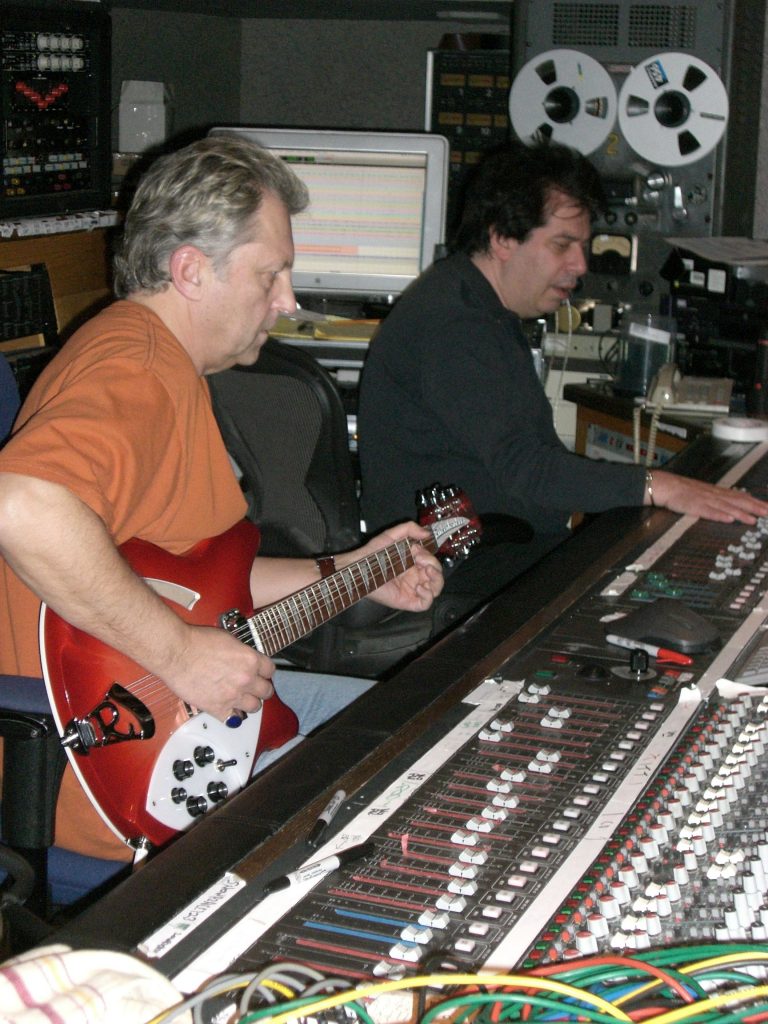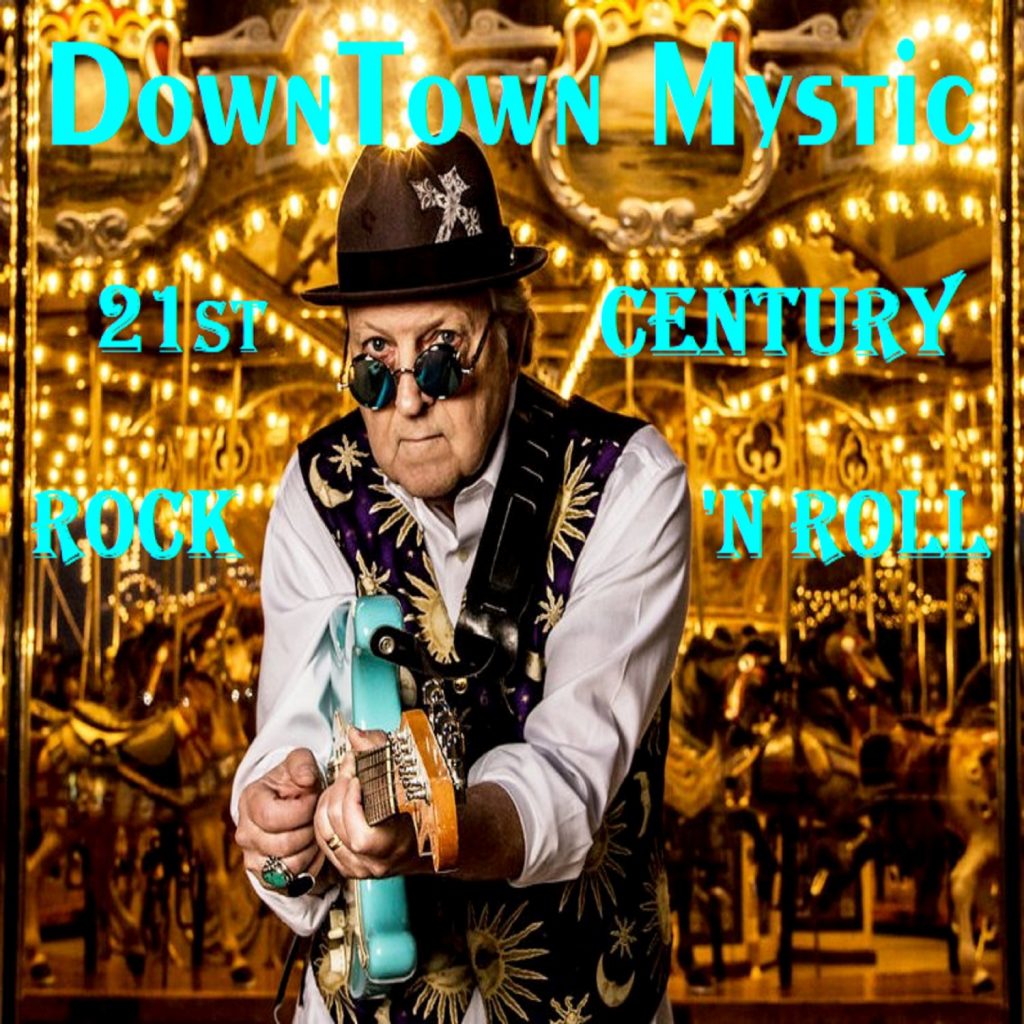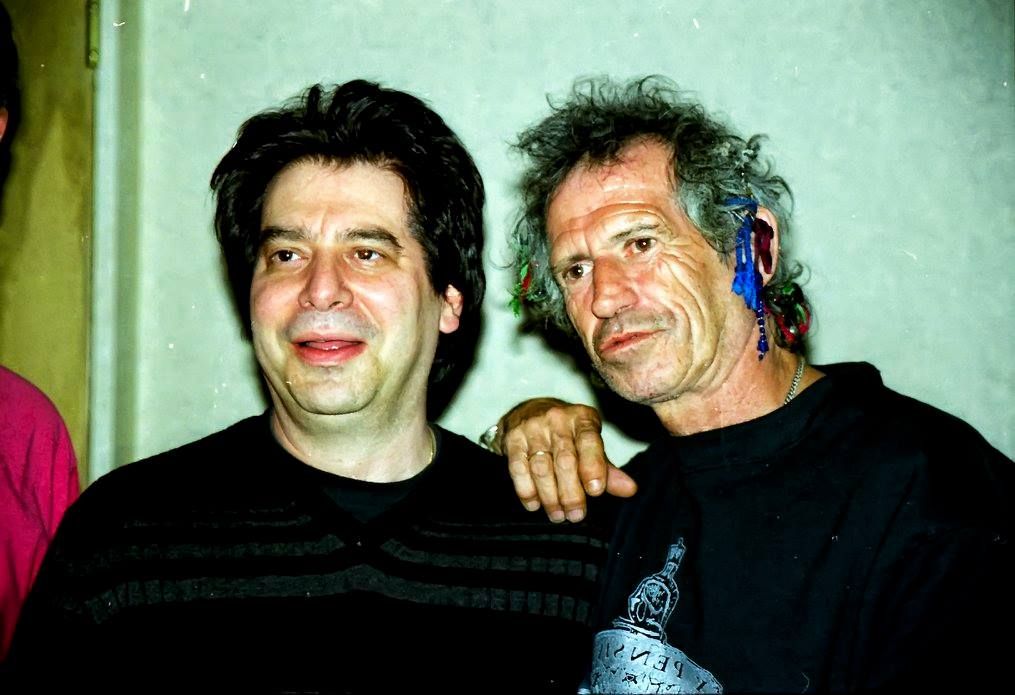Songwriter Robert Allen of DownTown Mystic has released 21st Century Rock ‘n Roll, an album featuring E Street Band members Max Weinberg and Garry Tallent. The album chronicles his longtime career from his early 1970-1980s NYC nightclub days opening for Jim Croce, John Prine, and Bonnie Raitt.
21st Century Rock ‘n Roll contains 11 remastered tracks from DownTown Mystic’s entire catalogue. Robert picked the best 11 Rock n’ Roll tracks for the release. Allen says, “Garry Tallent and I go back aways. I met him when he was working on The River with Bruce. He had come to see my band play in NYC and would record with us when we got a production deal. I stayed in touch after he got back from the The River World Tour and we got together. He picked ‘Hard Enough’ to record because he thought the lead riff was something George Harrison would play and brought in Mighty Max, who I knew from high school.”
The release also provides Allen with the opportunity to honor long-time engineer Ben Elliott, who owned and operated Showplace Studios in Dover, NJ, until his untimely death in April 2020. Working with Ben also gave Downtown Mystic something in common with Stones legend Keith Richards. Ben was Keith’s personal engineer at the Rolling Stones guitarist’s home studio in Stamford, CT. Robert remembers fondly, “The stories Ben would tell about working at Keith’s were hilarious. He really enjoyed every minute with him.”
21st Century Rock ‘n Roll is a testament to Allen’s status as a true Rock n’ Roll survivor and an eyewitness storyteller of modern American music history.

ABS: What does your new album 21st Century Rock n’ Roll mean to you?
When we talk about Rock, Rock is not necessarily modern Rock n’ Roll. Modern Rock in 2021 generally has little to do with classic Rock n’ Roll from the fifties and sixties. I feel this is my contribution to keeping the genre alive in the twenty-first century.
Can you talk about the remastering process?
The album itself is like Downtown Mystic 2.0. I have a new album that I am going to be recording soon and I decided to put out The Downtown Demos. It’s a six song E.P. Two of the songs have vocals on them and they basically were instrumental tracks that had been sitting around for a number of years. I realized I hadn’t been writing that much and there are a couple of things on it where I wrote melodies and lyrics to the tracks.
The weird thing about it is that I am not a blues based kind of guy, but I noticed the songs were coming out in a blues kind of way which is unusual for me. Usually, you put out an album and if it goes anywhere then you put out the demos later. I thought I would put out the demos. It is like a real world as it happens. The listener can hear in real time what they sound like – from the originals to where they ended up.
The interesting thing about The Downtown Demos is that they are my only release without a band. Basically, I did guitar music for T.V. syncs and then put them on my eight track and added different layers to them. What makes them interesting is that they are beats without a live band. The Bond brothers put beats and percussion to what I was doing. I put it out and we promoted it as beats. I guess when you have the word beats in something today, it gets picked up by a lot of people. I have over a hundred thousand plays on Spotify from it and I had no idea anyone was going to even listen to it. I thought it would be a good time to do a reboot of Downtown Mystic and take my best Rock n’ Roll tracks and create a full album. I thought, let me take my best stuff and remaster it and hopefully it will reach a new audience.

Was it hard to pick only eleven tunes from your entire catalog?
Yes, it was. For instance, there are a couple of tracks on the new album on 21st Century that feature E Street players Max Weinberg and Garry Tallent. They play on “Hard Enough” and “Way to Know.” I did an eight-track album called Downtown Mystic on E Street and the song “And You Know Why” turned out to be my biggest song. It is more of a pop tune. With the new record, I really wanted to go with the Rock n’ Roll songs. I stayed away from the more melodic songs as I may have more up-tempo tracks than any artist out there.
Do you have a favorite out of the eleven?
It is funny because I thought for years the lead track “Lost and Found” was going to be put out on a record called ‘Lost and Found.’ There are a lot of records out there called Lost and Found and I kept thinking I can’t put this out. I wanted that to be the lead track on the album and after all these years, I finally put it out on this album. It has always been one of my favorites. It is a little weird kind of track, but it really does put what I do into it; The short form of describing my music consists of my influences: Buffalo Springfield meets Rockpile. Back in college I was really into CSNY.
What are your favorite tracks where you feel longtime recording engineer Ben Elliot really shines through?
He became better with age. One of the last things we did was “No Exceptions” which is on the new record. The whole idea of that song was to try and get it to sound like what it literally sounds like, going to hell. I had the harmonica part planned. I have a longer version of the track that I think I am eventually going to remix at another time. I am actually going into the studio in a couple of months. One of the tracks that I want to remix is the full version of “No Exceptions.” What you hear is called the radio mix. There is a whole slide instrumental that has been cut out of it. What Ben put together was so fine-tuned and he did such an amazing job. I consider the song his best engineering.
We had an interesting relationship. When he would set up a mix, he took it down from an eight-hour mix to a four-hour mix. He kept getting better and when he worked with Keith Richards, it helped him hone his skills. Where he used to take a lot of time to set up the board and the mix, he could just go right to it. Every time I would go into his studio, he would have new outboard gear. He would have gear from Abbey Road. In most studios behind the console is the outboard equipment.

Most studios look exactly the same. Behind Ben’s outboard gear, there used to be seats. You could sit behind the outboard gear and watch him work at the console. Over the years he accumulated so much vintage outboard gear that there was no place to sit as you would just be looking at the back of the outboard equipment. He had stacks and stacks of it and he knew how it all worked and he had it all patched in. It was crazy. Watching him work was very interesting. As a great engineer, he knew where the levels should be. If you listen to my music, it is basically all guitars. When I would go into the room, I would tell him that I needed to hear more guitar. When he would see what I was going for, he would start to get into it. It would always sound amazing.
What is it like collaborating with Max Weinberg and Garry Tallent?
I had been in a band for ten to twelve years and I was the writer, producer, and arranger. I couldn’t enjoy myself because I was always listening to what the other guys were playing. I really wanted to get the recordings to sound better. There is a real difference between playing live and recording. As a live band, you are constantly playing gigs and you develop bad habits. The drummer will accent guitar lines. In the studio, you have to cut all of that out. When I walk in with Gary and Max, they talk to each other about what they hear.
After the short sign language that they do or whatever you call their communication, I am just stand there. All I have to do is play my guitar. It is crazy. It is the easiest gig ever. To have that kind of confidence. I realized this is how Bruce can do what he does. When you go to a Springsteen show, the band is always the same. They are always in the ninety to one hundred percent range. Every night, they are going to be on and they are never going to let you down. As the front man, Bruce can do anything he wants because the guys behind him are so solid.
Can you talk about your early days performing in NYC and opening for Jim Croce, John Prine, and Bonnie Raitt?
I was in some high school bands but they were always garage kind of bands and they never got out of the cellar. We would start a band and go for three to four months and then we would break up. I figured when I got to college, I was going to put the kind of band together that I wanted and that is what happened. Woodstock had just happened and CSNY were like the American Beatles. Acoustic music was a force and that is really hard to think of today. Jim Croce who was a folkie had hit records. I graduated from what is now Rowan University. It was called Glassboro State back then. My roommate was on the student activities board and he was booking concerts. He bought the first John Prine album and he flipped over it.
He really wanted to book John Prine. Just before Christmas in December of 1972, he booked a show around John Prine, Bonnie Raitt, and Jim Croce. I told him Jim Croce was bigger than John Prine and Bonnie put together as he had hits on the radio. I told him I would open the show as I had a band called Trilogy and we were pretty big on campus. WYSP in Philadelphia was broadcasting the concert live from The Glassboro gymnasium. This was a chance to be on Philadelphia radio and I told him we would do it for free. We opened the show and Jim Croce followed. His guitar player was Maury Muehleisen who was from Glassboro. He had a record deal and put out a record on Capital and he had Jim playing with him.
Jim then received a deal and flipped it all around and became a big artist. John Prine was the headliner. Bonnie was snowed in as she was coming from Syracuse and the airport. Just as John Prine was walking onstage, Bonnie came in the backdoor and grabbed John by the neck. I don’t know how he managed to keep his balance because he was a foot away from falling twenty feet and landing on his head. It was crazy. It was a sold-out show of over two thousand people and I have a reel-to-reel tape of it from WYSP. It was fantastic.
How does your spirituality affect your music?
At the age of twenty-seven, I started numerology. I became a numerologist. One of my really good friends when I was playing in New York had a band and he was playing with so many great players who are now all household names. His name is Monte Farber and he is like a new age guru. He writes books using his wife’s tapestries. He’s created Karma Cards. He is into astrology and I am into numerology. Numerology is the science of vibrations. The father of mathematics is Pythagoras but he was also the father of Numerology which he only taught to select students. It wasn’t until his death that students started coming forward.
What is your songwriting process like?
My songwriting process has changed. With Downtown Mystic, I am about recording and making records. I am involved in production. The process involves what I hear in my head which includes: the arrangement, the sound, and the final production. I write around that kind of thing. Early on, I would sit down with a guitar and write songs. I don’t know if you saw The Beatles ‘Get Back’ episodes. McCartney comes in a creates Get Back out of thin air. That is kind of like the way it is. They had an incredible process where they could do it in front of each other. For me, I sit in a room and strum a guitar and something comes out and it starts getting developed.
What’s next for you and what else do you want to accomplish?
It is weird because I put out this record last year called, ‘Used Records History 1979-1985,’ and it was all the stuff I did after my band The Tupelos broke up. My goal has always been to be a writer and producer. As a songwriter, I have always wanted to write great songs. I see all the way through the process. I have been true to myself and I didn’t compromise. As far as being famous, back then it was all about trying to get a record deal as it’s what every musician was after. No one really knows what it means. You see everyone else and you want to be like them.
The truth of the matter is that it is all about writing really good songs and one day hopefully having the songs recognized. Once the internet came along so did digital and sync licensing became a real big thing. Nobody really knew about it until 2008. I have just about everything I could possibly want as my songs are on over two hundred T.V. shows.
I can’t complain. I was just reading something the other day that said Paul McCartney does exercises while watching ‘American Pickers.’ I have songs on around twenty-six shows of American Pickers so there’s a good chance he has heard my music in the background. To answer your question, I am looking forward to my next album as I haven’t been in a studio since 2018.
21st Century Rock ‘n Roll


